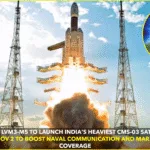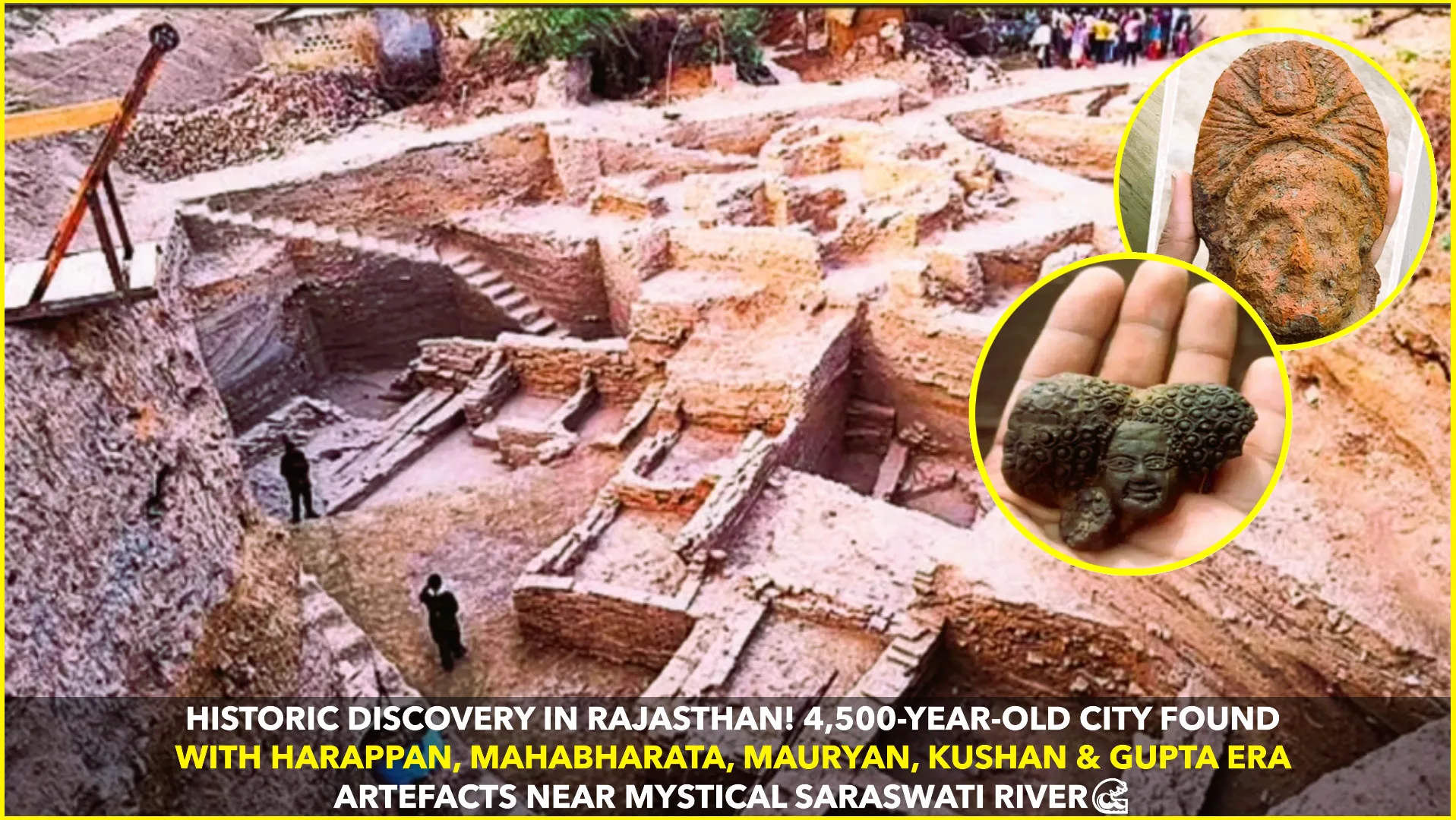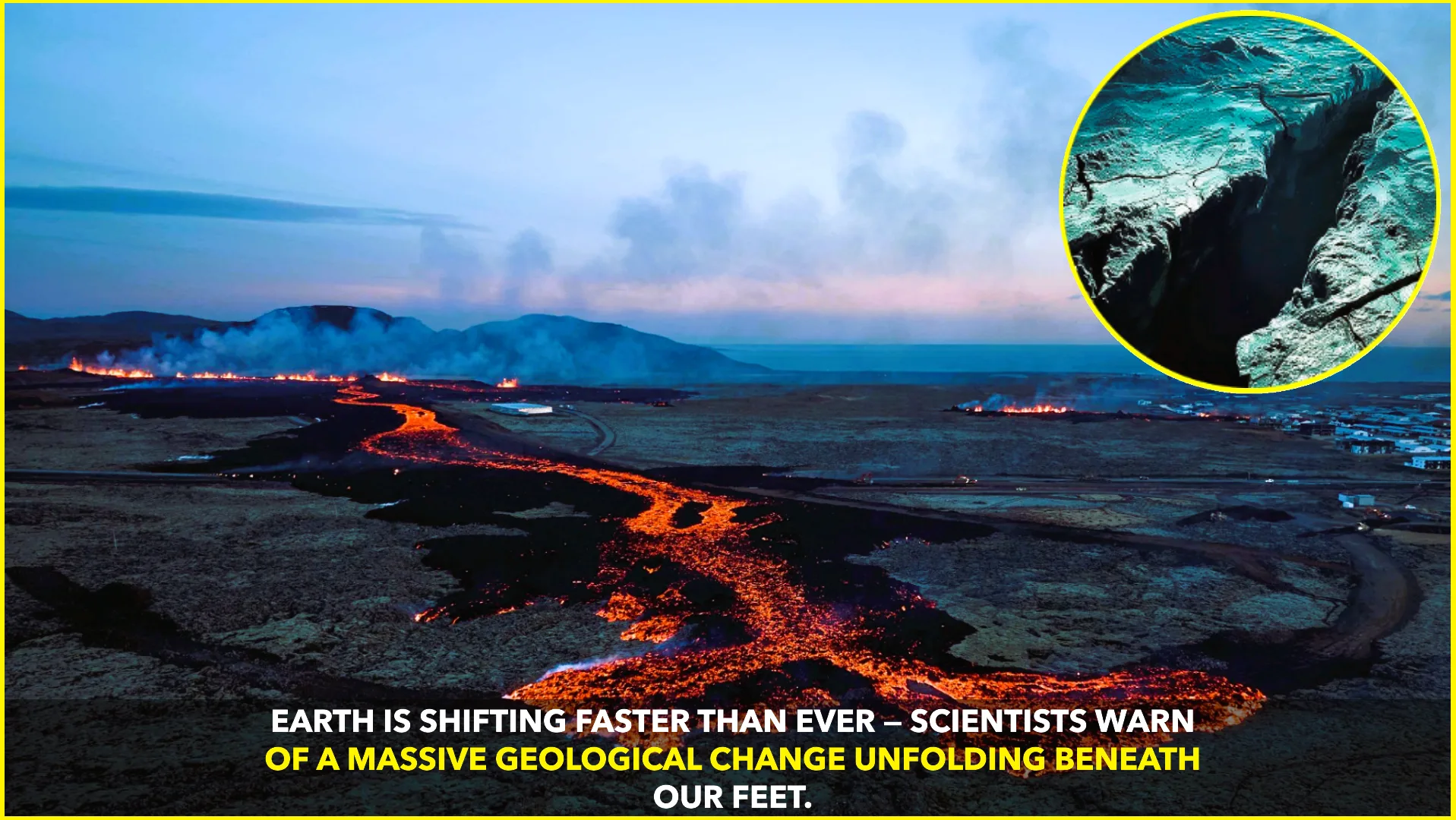In a discovery that could reshape the understanding of India’s ancient past, archaeologists in Rajasthan’s Deeg district have unearthed a 4,500-year-old ancient city. The site has revealed a remarkable trove of over 800 artefacts, with relics spanning five distinct historical periods — from the Harappan post-urban phase and the Mahabharata era to the Mauryan, Kushan, and Gupta dynasties.
The excavation, carried out by the State Archaeology Department and local research teams, uncovered evidence of a continuous cultural and religious civilisation that flourished in the Deeg region of Bharatpur district. According to officials, this is one of the deepest and most significant archaeological digs in Rajasthan’s history, offering a multi-layered timeline of ancient Indian civilisation.
Among the finds were intricately designed pottery, copper tools, coins, terracotta seals, figurines of Hindu deities, and even sacred fire altars (yajna kunds) — indicating ritualistic practices tied to Vedic traditions. Items from the Mauryan and Gupta periods suggest the region remained an active hub through several centuries of political and cultural evolution.
Notably, archaeologists also identified a deep and wide ancient river channel running through the site. Preliminary hydrological studies link this channel to the long-lost and mythical Saraswati River, mentioned extensively in the Rigveda. This river is believed by many historians and Vedic scholars to have supported early civilisations and could now offer physical evidence of its course.
“This discovery is monumental. The continuity of culture from the post-Harappan era to the Gupta period in a single site is extremely rare. The fire altars and sacred objects also link it to spiritual traditions that resonate with the Mahabharata era,” said a senior archaeologist leading the excavation.
Experts believe that the findings at Deeg are not just a local revelation but a national treasure, adding valuable data to the study of ancient Indian urbanism, trade, and religious practices. The unearthed city appears to have been a well-planned settlement, with drainage systems, domestic structures, and communal areas.
The Archaeological Survey of India (ASI) has taken note of the discovery, and the Rajasthan government is moving to propose the site as a National Archaeological Protected Site to preserve its historical value.
Historians and scholars across India have welcomed the news. “This city could serve as a missing link between the Indus Valley Civilisation and later Vedic and imperial ages. The Saraswati riverbed adds another layer of historical credibility to ancient texts,” said Dr. Ramesh Bhardwaj, a historian from Delhi University.
The site is now under tight protection, and further excavations are planned to expand the current findings. Plans are also being considered to develop the area into a heritage tourism destination, similar to sites like Dholavira and Kalibangan, thereby boosting cultural tourism in Rajasthan.
As India continues to uncover more of its buried past, the Deeg discovery is a striking reminder of the depth and richness of its civilisation. With its blend of historical, mythological, and scientific significance, this ancient city stands as a testament to the continuity of Indian culture across millennia.
Sources:
- Rajasthan State Archaeology Department
- Interviews with archaeologists on site
- Press briefings from ASI (July 2025)










